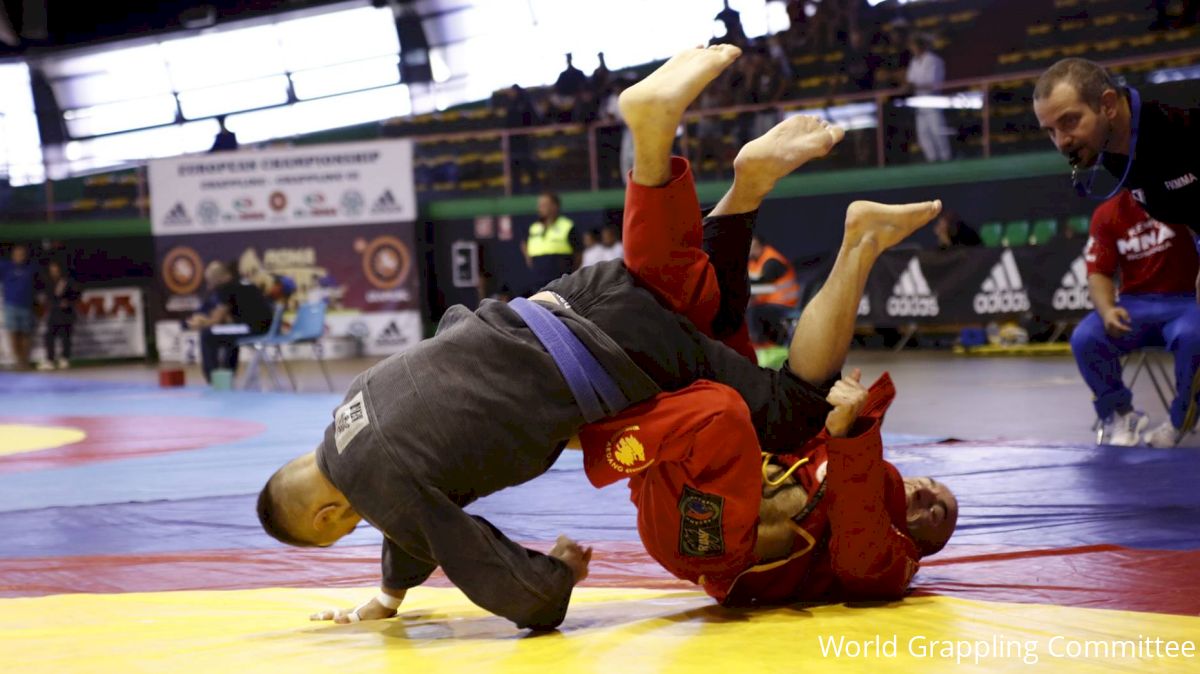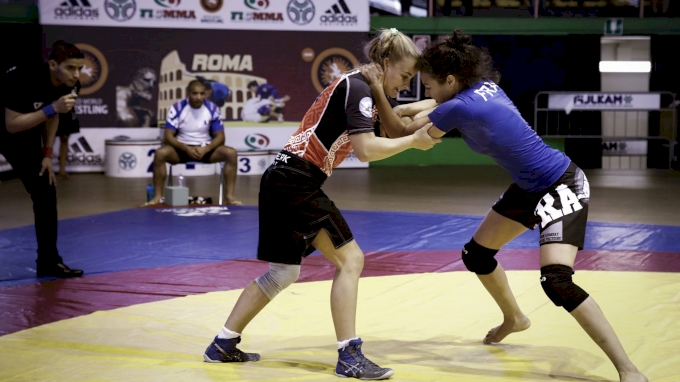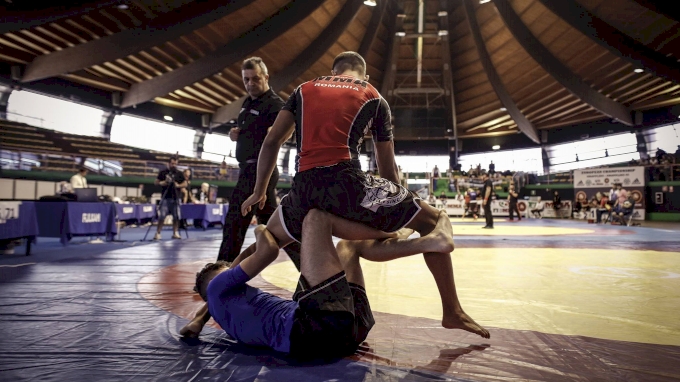A Guide to UWW Grappling Rules: Leg Reaping (In The Gi), Big Takedowns
A Guide to UWW Grappling Rules: Leg Reaping (In The Gi), Big Takedowns
Leg reaping, points for big takedowns, restart positions and OT. Here’s everything you need to know ahead of the 2018 UWW World Grappling Championship.

Leg reaping, extra points for big takedowns, restart positions and overtime. Here’s everything you need to know ahead of the 2018 UWW World Grappling Championship.
For fans of IBJJF, ADCC or submission-only grappling, the UWW Grappling style will take a little getting used to. The differences are small once you get into it, and easy to adapt to as either a spectator or participant.
Matches are five minutes long in all divisions and take place on a wrestling mat with a circular boundary.
For all positions, control of three seconds or more is required to score.
We've explained the main rules below but the best way to learn is to watch. Check out the recent Russian Nationals, aka 5 Star, for a perfect example of what to expect.
Takedowns:
Standard takedown: 2 points
High amplitude takedown: 3 points
This is a takedown above waist level where only the feet touch the ground and the opponent lands on their back.
Fast takedown: +2 points.
If the takedown action starts within 3 seconds of the referee’s whistle and finishes in one continuous action an extra two points are scored, giving 2 + 2.
IMPORTANT: Pulling guard can results in negative points or scored points
If after pulling guard no sweep or reversal occurs, 2 points is scored to the combatant on top. By pulling guard and sweeping within 3 seconds, 2 points are scored for a reversal. If pulling guard happens within 3 seconds of the referee’s whistle and there is no reversal, top scores 2 + 2.

Reversals:
Sweep / reversal: 2 points
Any time a combatant goes from bottom to top, a reversal is scored. This includes sweeps from guard or reversing position from under mount / side control etc.
Positions:
Side mount: 3 points
Important – it is scored as side mount, not passing the guard. Anyway a combatant gets there will result in 3 points. A takedown that lands in side mount is 2 + 3. A bridge that reverses position from under side mount and lands in side is 2 + 3.
Mount: 4 points
Knees touching ground. Opponent can be on their back, side or belly.
Back mount with hooks: 4 points
Important feet are not crossed and inside the thighs.
Scores are accumulated only when improving position. By moving from side mount to mount it is scored 3 + 4. From mount to side mount, only 4 points are scored. Once a combatant scores for a position, it is not possible to score again from that position or an inferior position until the action has been reset to guard (full or closed) for 3 seconds. Half guard doesn’t reset – passing half guard to side mount earns 3 points. Returning to half guard and passing again scores no additional points.

Attack points
1 point for a close submission attempt that lasts a minimum of 3 seconds with a real chance of ending the match. Point is given when the combatant escapes the submission attempt.
1 point for a high amplitude takedown without control for 3 seconds.
Restart Positions
One of the main differences to other grappling formats is the use of restart positions. If the combatants go out of bounds the referee will order a restart position based on last position secured:
The restart positions are:
- Standing
- Closed guard
- Half guard
- Open guard (they go out during open guard or any other situation, like a scramble or turtle guard and such, where you cannot choose another restart position)
- Side mount
- Full mount
- Back mount
If the combatants go out during a scoring action and there is no danger for either athlete, the referee will let the action finish (usually the 3 sec control period) before stopping the athletes. He then can give the points and indicate the restart position depending if the action was successful or not.
During a submission attack and there there is no danger the combatants will exit the mat, the referee will let the action continue until the submission attempt is finished. Fleeing the area while defending a submission will result in disqualification.
Overtime
If the score is tied and there is winner by the criteria of a: actions that value more points, or b: less number of cautions the contest will move to 1 minute of submission-only overtime.
A coin toss will determine a combatant to choose between back mount restart or armbar restart. The match will end if a submission occurs during this time, or if the loser of the coin toss escapes or survives for the 1 minute overtime period.
Note: Cautions are still in place, meaning athletes can be disqualified for not attacking or not trying to escape.
Illegal actions
- All leglocks are legal beside heel hooks. Reaping the leg is permitted.
- Neck cranks and spine locks are illegal
- Spikes and slam are illegal (hard takedowns, suplex and such are legal – picking an opponent from the mat and slamming them is not )
- Any grip on the gi is legal but it is not permitted to unite the belt and use it to choke
- Grabbing less than 4 fingers (small joint manipulation) is not permitted.
Passivity
The combatants must always work to improve position or attack for a submission. After 15 seconds of non-action the referee will issue a verbal warning. After 15 seconds more a passivity caution of 1 point to the opponent will be awarded. 4 passivity caution result in disqualification.
Important examples:
- Athlete on top inside closed guard that does not try to open is considered passive
- Athlete on bottom in closed guard that only holds the opponent but does not try to sweep or submit is considered passive.
Watch the 2018 UWW World Grappling Championship on FloGrappling LIVE or On Demand, Sep 6-9. Click for more info.